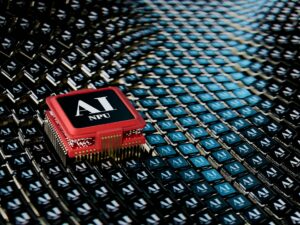A Rise in Translation and Global Communication Powered by Artificial Intelligence

A Rise in Translation and Global Communication Powered by Artificial Intelligence
Since the beginning of human connection, language has been a barrier that has limited the ways in which individuals, corporations, and cultures are able to engage with one another. However, in recent years, translation technologies that are driven by artificial intelligence have completely revolutionized the manner in which we interact across international boundaries. It is now possible to perform in real time with astonishing precision what was earlier accomplished via the use of skilled human translators or through the use of clunky dictionary lookups. As a result of this development, new opportunities have arisen in the fields of education, international commerce, diplomacy, and even regular talks between casual acquaintances.
1. The Transition from Human-Driven Translation to Translation Driven by Artificial Intelligence
Historically, translation was mostly accomplished via the use of human interpreters and text-based methods, which often lacked sufficient subtlety. In the beginning, computerized translators were based on rules and provided word-for-word substitutes, but they were not able to accurately capture meaning. There has been a complete transformation brought about by the use of artificial intelligence, namely neural networks and machine learning. These days, artificial intelligence systems are able to assess context, tone, and even cultural allusions, which allows them to produce translations that seem more natural than robotic.
2. The Workings of Artificial Intelligence Translation
Neural machine translation (NMT), which employs deep learning models that have been trained on gigantic multilingual datasets, is the foundation upon which AI-powered translation is built. NMT analyzes full sentences at one, as opposed to older systems that divided sentences down into discrete portions. This results in improved grammar, coherence, and correctness. These models become more intelligent and dependable over time as a result of feedback loops, which allow them to develop over time.
3. Conversations in Real Time, Without Obstacles of Borders
The interpretation of speech in real time is one of the most innovative uses of artificial intelligence translation at the moment. Imagine a scenario in which two individuals who speak completely different languages are able to have a discussion fluently via the use of an app or a smart gadget. AI is capable of listening, translating in real time, and even imitating genuine speech patterns. The use of this breakthrough has already begun in the context of international business meetings, travel, and providing assistance to overseas customers.
4. Dismantling Obstacles in the Field of Education
By enabling students to access learning materials in their native language, artificial intelligence translation is making education more accessible to a wider range of people. Lectures, research articles, and online courses from across the world may now be translated with relative simplicity, which facilitates the freer dissemination of information. When it comes to studying from an international source, students in more rural areas no longer encounter as many obstacles as they formerly did.
5. A Widening of Opportunities for International Business
When it comes to enterprises, language problems can become a barrier to access into international markets. Artificial intelligence translation allows businesses to localize their websites, ads, and customer support in a fraction of the time and at a fraction of the expense. This not only enhances the consumer experience but also increases trust by giving the impression that firms are more culturally aware and attuned to the local community.
6. Diplomacy and international cooperation.
In international politics and diplomacy, the importance of language cannot be overstated. Conflicts may arise as a result of misunderstandings, but translation technologies driven by artificial intelligence can help leaders communicate more clearly and more rapidly. Real-time multilingual cooperation is also beneficial to activities carried out by international organizations and humanitarian groups.
7. The Importance of Artificial Intelligence in the Maintenance of Minority Languages
Not only is artificial intelligence helping to bridge worldwide languages, but it is also helping to preserve endangered languages. Artificial intelligence assists in documenting and making less well-known languages accessible to a larger audience by training models on such languages. In the process of globalization, this guarantees that cultural identity and legacy are not lost in the fight for globalization.
8. The Difference Between Accuracy and Human Touch
Despite the significant progress that has been made in AI translation, there are still many obstacles to overcome. It is still possible for robots to have difficulty accurately capturing subtle subtleties, humor, idioms, and cultural sensitivities. In situations such as legal contracts or creative writing, human translators continue to be essential for assuring accuracy and emotional depth in the translation process. people and artificial intelligence working together to create a future in which computers manage speed and scale while people improve meaning is likely to be the greatest future.
9. Concerns Regarding both Privacy and Safety
Privacy becomes a worry as artificial intelligence translation grows more dependent on cloud-based technologies and massive datasets. Conversations, business papers, and sensitive information are often handled via servers, which raises concerns regarding the privacy of personally identifiable information. In order to establish confidence in AI translation systems, it will be necessary to implement more stringent encryption and privacy protections.
10. How Artificial Intelligence Will Shape the Future of Global Communication
With an eye toward the future, it is anticipated that translation driven by AI will become even more natural and seamless. The following are examples of potential future innovations:
- Glasses that use augmented reality (AR) technology to display subtitles that are translated in real time in front of your eyes.
- Speeches delivered by artificial intelligence avatars in different languages, including lip motions that are synced.
- It is possible to find cross-cultural helpers who not only translate words but also modify their tone and manner in accordance with cultural norms.
The emergence of translation driven by artificial intelligence is not merely a scientific triumph; it is also a revolution in cultural norms. Deeper global connection, cooperation, and understanding are being made possible by artificial intelligence (AI), which is tearing down boundaries that have divided nations for millennia. Even while there are still obstacles to overcome in terms of subtlety, privacy, and accuracy, the route that lies ahead indicates that in the future, language will no longer be a barrier but rather a bridge.




